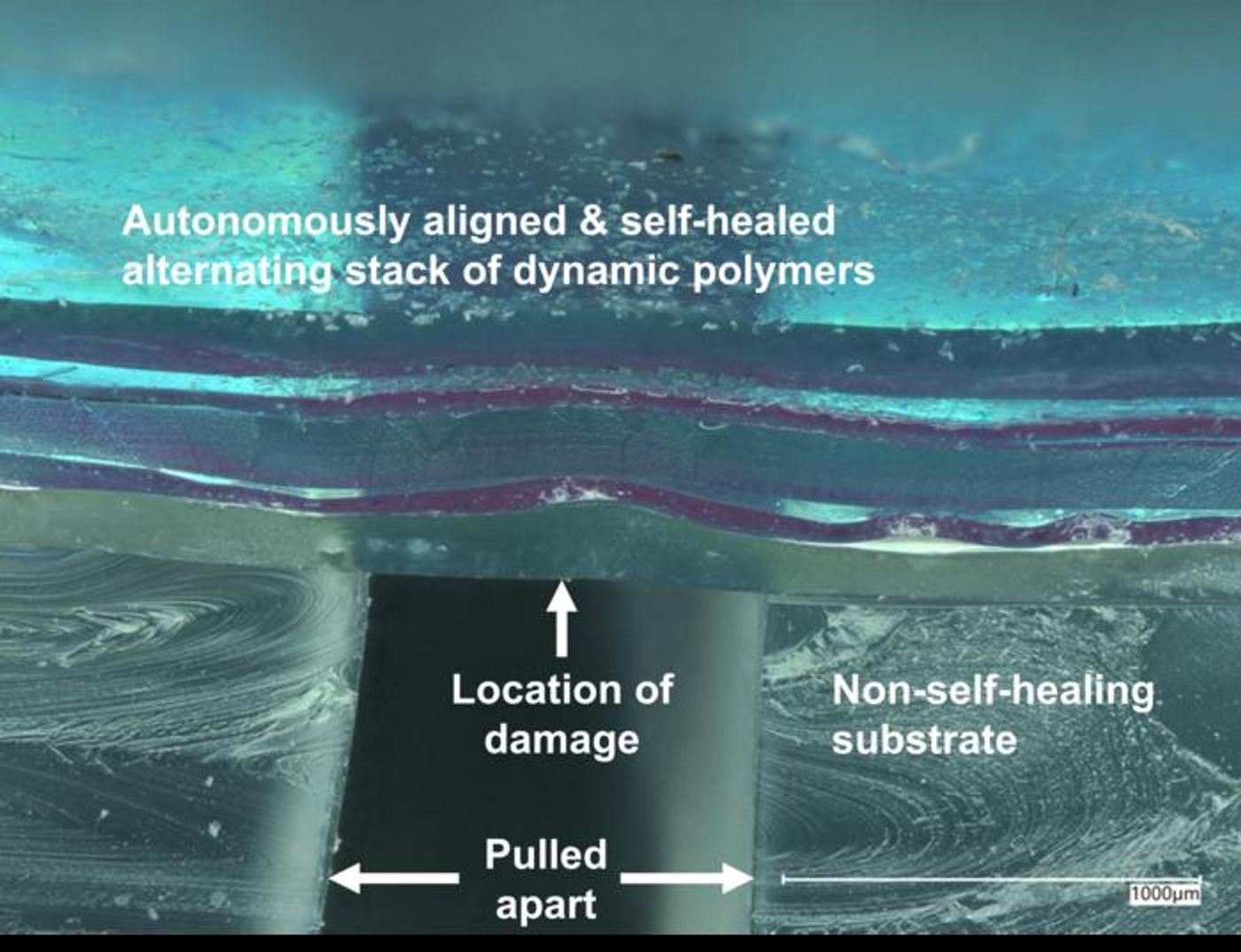Synthetic Skin Developed with Self-Healing Abilities
A recent study published in Science discusses how engineers have developed synthetic skin with the ability to self-heal, which holds the potential to expand the field of soft robotics by creating robots with more human-like characteristics. Until now, researchers have had difficulty creating synthetic skin with multiple layers that could realign after being damaged, but this most recent study could change that.
A digital microscope image of a 5-layer synthetic skin demonstrating self-healing abilities that was used in the study. (Credit: Bao Group, Stanford U.)
“We’ve achieved what we believe to be the first demonstration of a multi-layer, thin film sensor that automatically realigns during healing.,” said Chris Cooper, who is a Ph.D. candidate in the Department of Chemical Engineering at Stanford University, and lead author of the study. “This is a critical step toward mimicking human skin, which has multiple layers that all re-assemble correctly during the healing process.”
For the study, the researchers used materials comprised of long molecular chains linked by hydrogen bonds, which mimic the double-helix strands of human DNA, which lets the material mimic the stretching ability of human skin without ripping. To allow electric conductivity within the material, the researchers used polydimethylsiloxane (PDMS) aka silicone and polypropylene glycol (PPG) which both possess mechanical and electrical properties that can exhibit electrical conductivity when combined with micro- or nanoparticles.
The researchers discovered that heat sped up the healing properties of their new synthetic skin. For example, the skin would take approximately seven days to heal at room temperature but would heal in approximately 24 hours when heated to 158 degrees Fahrenheit (70 degrees Celsius).
Pieces of magnetically-attracted synthetic skin, which heals and returns the electrical conductivity, indicated by the LED lights. (Credit: Bao Group, Stanford U.)
“Our long-term vision is to create devices that can recover from extreme damage. For example, imagine a device that when torn into pieces and ripped apart, could reconstruct itself autonomously,” said Cooper.
Going forward, the researchers envision robots performing non-invasive medical treatments after being swallowed then re-assembling within the body. Another potential application includes robots with synthetic skin that can feel touch just like human skin.
What new discoveries will researchers make about synthetic skin and robotics in the coming years and decades? Only time will tell, and this is why we science!
Sources: Science, EurekAlert!
As always, keep doing science & keep looking up!










